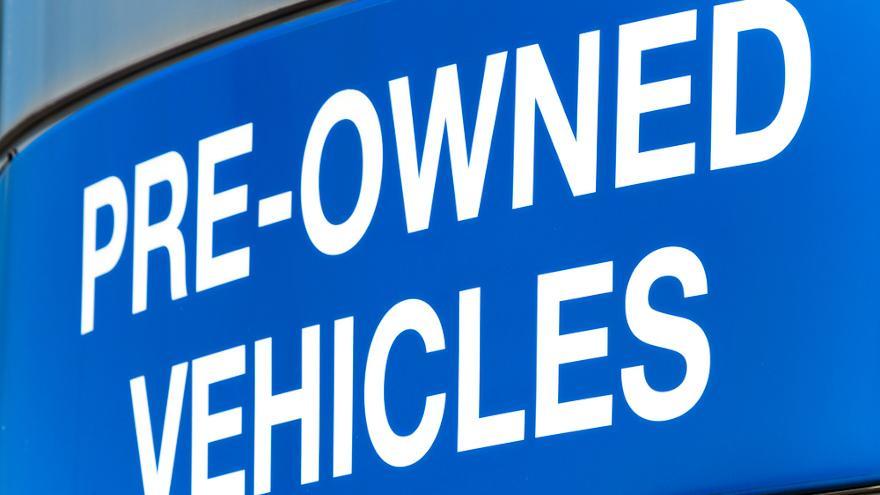CPO sales down over 9% year-to-date, but strong rebound still likely

Although last month’s sales slowed from a year ago's pace, the certified pre-owned segment remains a bright spot in automotive, says Cox Automotive, which projects CPO will return to 2019 levels this year.
In a Data Point report Monday, the company — citing Motor Intelligence — said there were 209,744 certified sales in February. That’s down 12% year-over-year, steeper than the total used-car sale decline of 3%, but it beats January CPO sales by 4%.
There were 201,023 CPO sales in the opening month of 2021, down from 215,999 certified sales in January 2019, according to Cox’s analysis of Motor Intelligence data.
Year-to-date, there have been 410,767 certified sales. That’s down more than 9% from the 454,188 CPO sales in the first two months of 2020.
But consider where the market was after February 2020, just before COVID-19 was declared a pandemic.
The first month of 2020 was the strongest January for the certified pre-owned market in a decade. February 2020 then beat those sales by 10%.
As reported previously in Auto Remarketing, February 2020 sales were up 13% year-over-year, and sales through the first two months of 2020 were at 454,188, Cox Automotive said in that report, again citing Motor Intelligence.
Consider this: in 2018 and 2019, each a record year, respective certified sales through two months were:
- 2018: 415,140 units
- 2019: 411,160 units
As Cox Automotive put it in the analysis, the first two months of 2020 were already 40,000 sales ahead of both 2018 and 2019.
(Then, of course, the world changed and you know the rest).
And despite a start to 2021 that’s comparatively much slower than the hot start to 2020, Cox is forecasting 2.8 million CPO sales in 2021, which would be similar to the record-setting 2019 sales, which marked the ninth straight best-ever year for CPO.
It would also be more than a 7% hike from the 2.6 million certified sales last year.
“The CPO market has been one of the strongest performing segments within the auto retail market despite the ongoing pandemic,” analysts said in Monday's report. “Going into 2021, we expect the CPO market to resume its consistent performance of annual growth after a dip in 2020.”
Nearly of a third of February’s CPO sales (32%) came from Chevrolet, Honda or Toyota, according to Cox. Nearly half (45%) came from those three, Ford or Nissan.
Looking at the overall used-car market, the total used-car SAAR for February was an estimated 38.0 million, Cox said. In January, it was at 38.1 million, and for February 2020 it was 39.4 million.
As far as dealer sales specifically, that is measured by Cox’s used retail SAAR estimate, which was 20.8 million for February. That’s steady with January and slightly softer than February 2020’s 20.9 million
In another Data Point report, this one released Wednesday, Cox Automotive pointed to another good sign for the used-car market: inventory is tighter, thanks to a speedier pace of sales.
There were 2.66 million unsold used vehicles at the end of January, the company said, citing its vAuto Available Inventory data. By the end of February, that figure had dropped to 2.59 million.
And although used supply has remained “fairly stable within that range” for three months, Cox points out, the supply of unsold used vehicles in February was down 12% compared to the same month of 2020.
Meantime, while there has been stability in day’s supply of used vehicles going back to October, February’s reading (48 days) was down from 54 in February 2020.
There were 1.42 million used vehicles in inventory at franchised dealers last month, representing a 43-day supply. There were 1.17 million used vehicles at non-franchised dealers, which equates to a days’ supply of 54.
“Spring traditionally is strong for used-vehicle sales, due mostly to tax returns and maybe some optimism that spring and summer are coming,” Cox Automotive senior economist Charlie Chesbrough said in the analysis.
One thing that has added more fuel in 2021 has been COVID-19 stimulus checks, he said, as those often go to an income bracket where a used-car purchase is more likely.
“Those buyers may be surprised to see tight inventory and high prices,” Chesbrough said. And that could slow sales down the road.
As it is, used-vehicle values have already seen an early spring bounce, according to Cox Automotive chief economist Jonathan Smoke, as the Manheim Used Vehicle Value Index reached a record high in February.
On the retail side of the equation, dealers were listing their used vehicles at an average price of $21,627 at the end of last month, Cox’s analysis of the vAuto data shows.
That’s close to the level at the end of January ($21,572) and down from early January’s peak of $22,131. But it’s up more than $2,600 from the year-ago figure of $18,974.

 View The Latest Edition
View The Latest Edition

